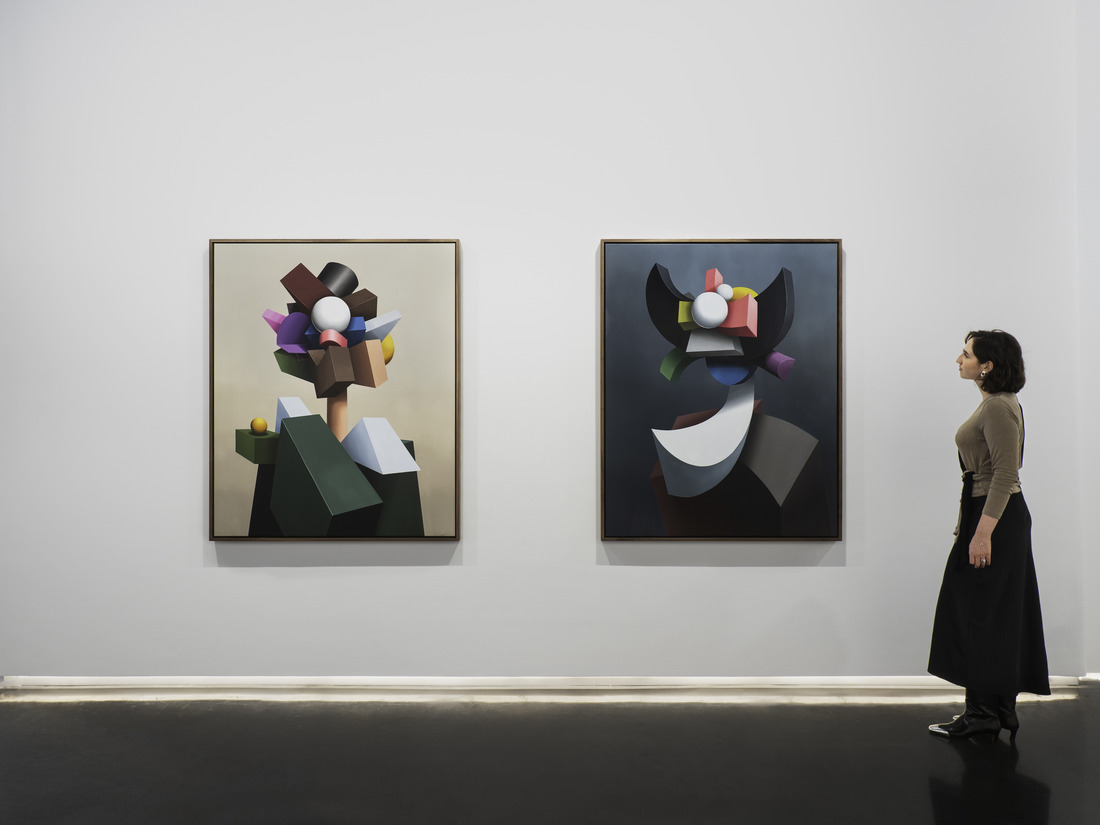
Born in Toronto, Canada, Jason Boyd Kinsella started painting again in 2019 after a 30 year hiatus, currently based in Oslo, Norway.
Unveiling mankind’s psychological makeup lies at the heart of Kinsella’s practice. In his work, he breaks down the personality traits of his characters into distinct geometric units whose shape, colour and size define their individuality based on the Myers-Briggs personality test, anchoring his subjects in the essence of their psychological attributes. If the clean surface of his paintings may recall the Old Masters’ works, his aesthetic and methods are resolutely contemporary.
Bio: www.jasonboydkinsella.com
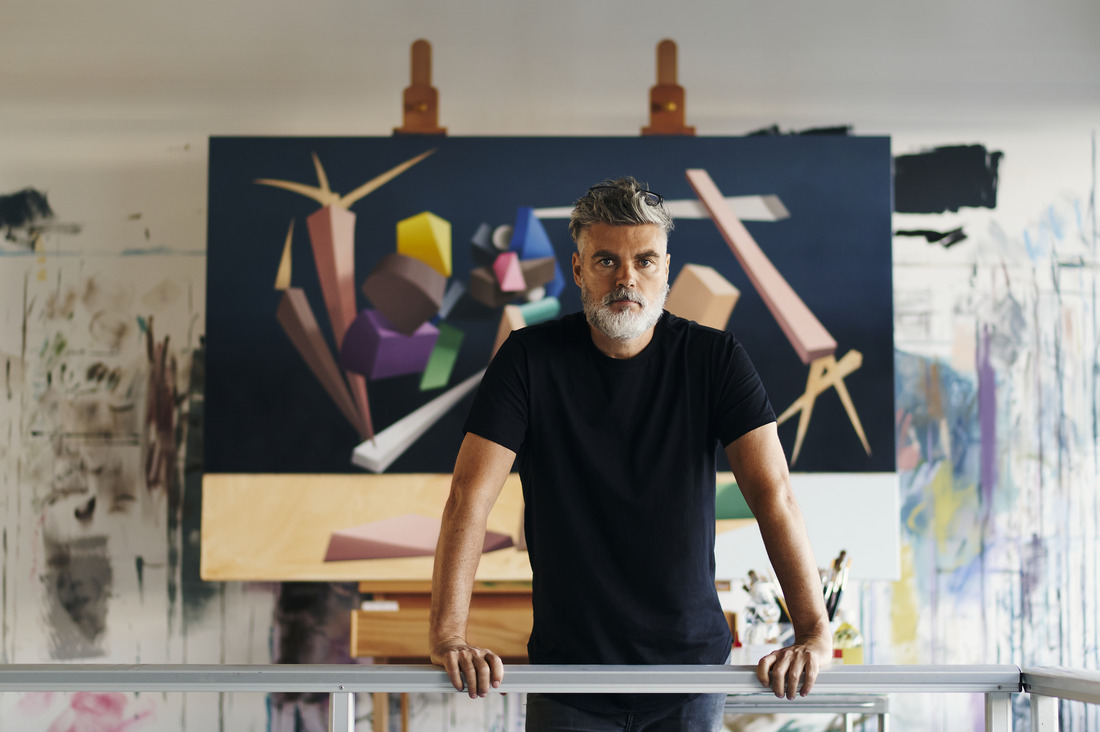
An Interview with Jason Boyd Kinsella
By Carol Real
Jason, can you describe the moment when you realized that art was your true calling?
Art has always been the language that made the most sense to me. Some of my earliest and clearest memories are of drawing stuff.
Very early on, my parents recognized that I was very interested in art and they encouraged me. My mother arranged for me to attend the Art Gallery of Ontario (AGO) for their after-school program which was a formative experience. It gave me access to mediums and equipment that I normally would not have encountered until University. It also gave me access to the gallery’s incredible collection, which is where I first encountered the work of Henry Moore. It left an indelible impression because it revealed to me that it was far more interesting to draw what I felt, not what I saw. After all of that, I went on to get my BFA at university. Suffice it to say, art chose me very early on.
Many artists draw inspiration from their surroundings, literature or music. What aspects of your environment have most significantly influenced your art? Are there any books, songs, or authors that have profoundly impacted your work?
My biggest inspiration is people. The portraits that I create are based on the real people in my life—friends or family, or perhaps a musician or artist that I love (or hate). Some are living, some are dead, but all of them are very real and have touched me in some way. When I work in my studio, I often listen to jazz. Miles Davis is one of my favorite artists. I love his ability to spontaneously improvise and create by feeling. His lesser-known album, L’assassinat de carala, is a great example of this. He was asked to make a soundtrack to a French film and he agreed. According to the story in Wikipedia, “Davis agreed to record the music after attending a private screening. On December 4th, he brought his four sidemen to the recording studio without having had them prepare anything. Davis only gave the musicians a few rudimentary harmonic sequences he had assembled in his hotel room, and, once the plot was explained, the band improvised without any precomposed theme, while edited loops of the musically relevant film sequences were projected in the background.” When you listen to that music, you immediately feel that it’s dripping with emotion and originality.
Could you share a specific experience or moment that profoundly impacted your artistic journey?
When I was a teenager my mother gave me a book on the Myers-Briggs personality test. That book reshaped the way I saw people. When I did the test I was blown away by how accurately it described me at great length. It had successfully reduced me to a collection of psychological building blocks which, when assembled, composed a shockingly accurate portrait of me. After that moment, I saw people differently. It was a seed that ultimately grew into the visual language that I use to portray people today.
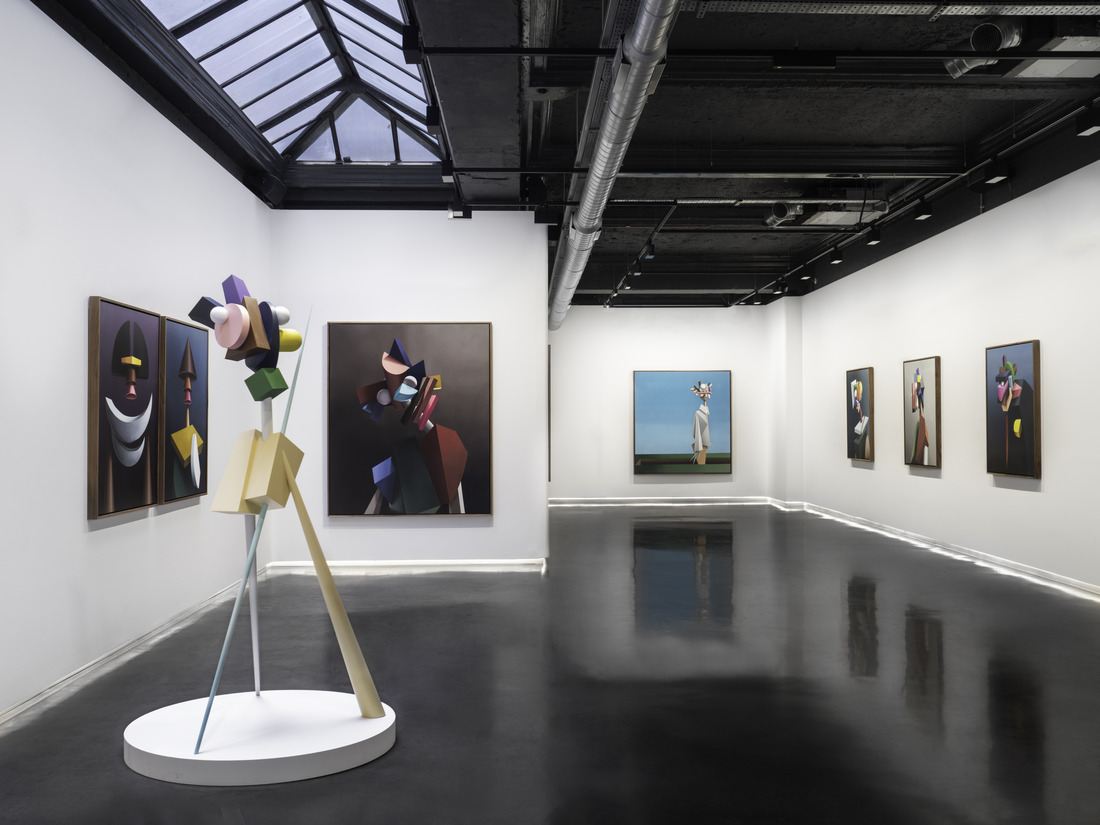
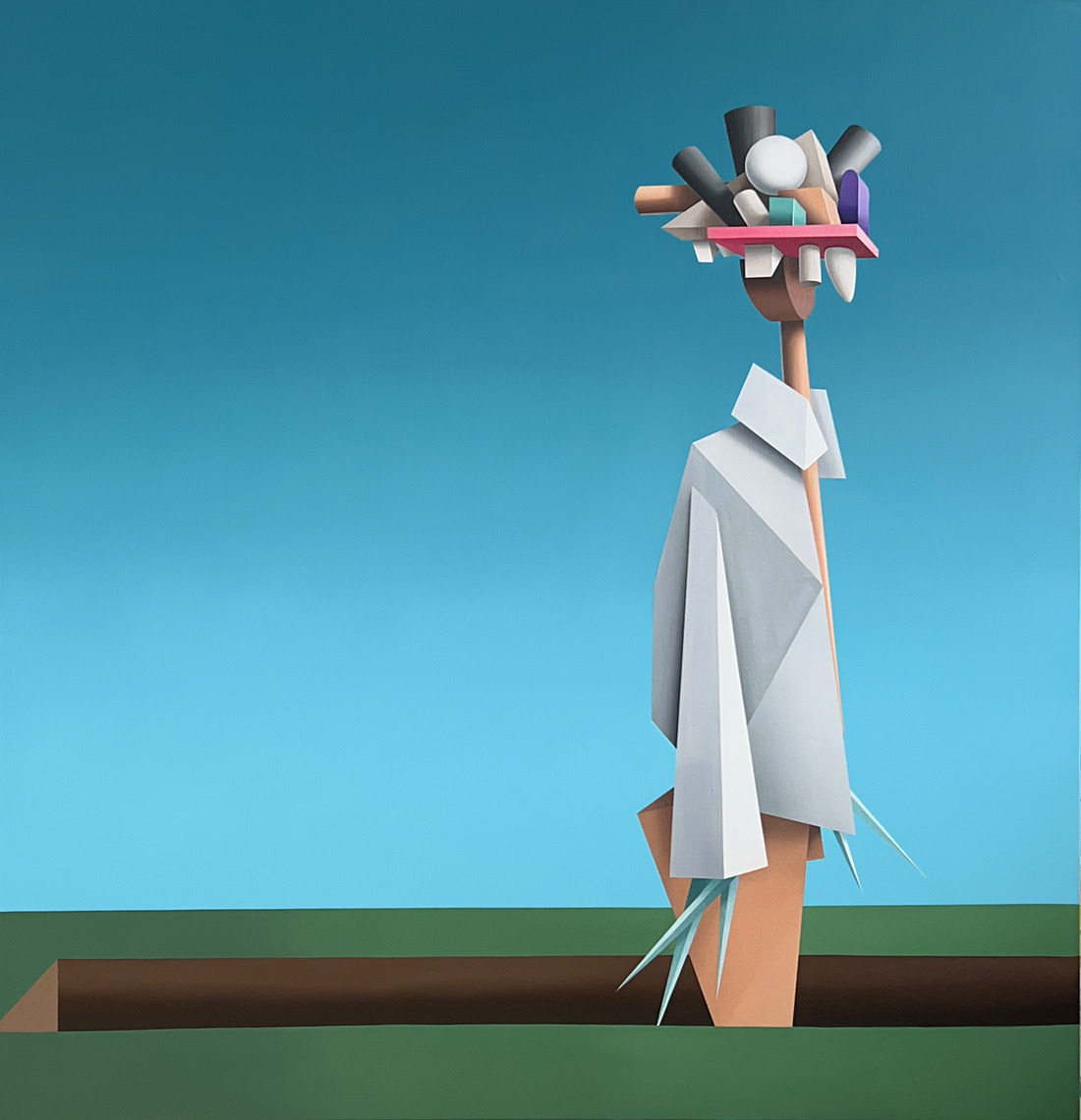
What role does personal introspection play in your creative process?
People often ask me if I get lonely working in my studio, but I never do. When I am working, I spend a lot of time in self-reflection–thinking about people and experiences. This ultimately becomes fuel for the work.
How can you effectively convey intricate emotions in your artwork?
I can’t speak to why someone feels something when they look at my work–I can only say that I felt something very visceral when I created it.
The use of color in your art is striking. How do you choose your color palettes, and what emotions or moods do you aim to convey through color?
Color is an important element in my work because it helps to conjure emotion. The palette of a work is chosen to compliment or accentuate the sitter’s personality. I use Photoshop to easily find the correct color balances, and then I move to the canvas to plot it out.
Your creative endeavors often explores the interplay between light and darkness. What draws you to this dichotomy, and what do you hope to convey through it?
Light adds mood which is essential to conveying a specific feeling.

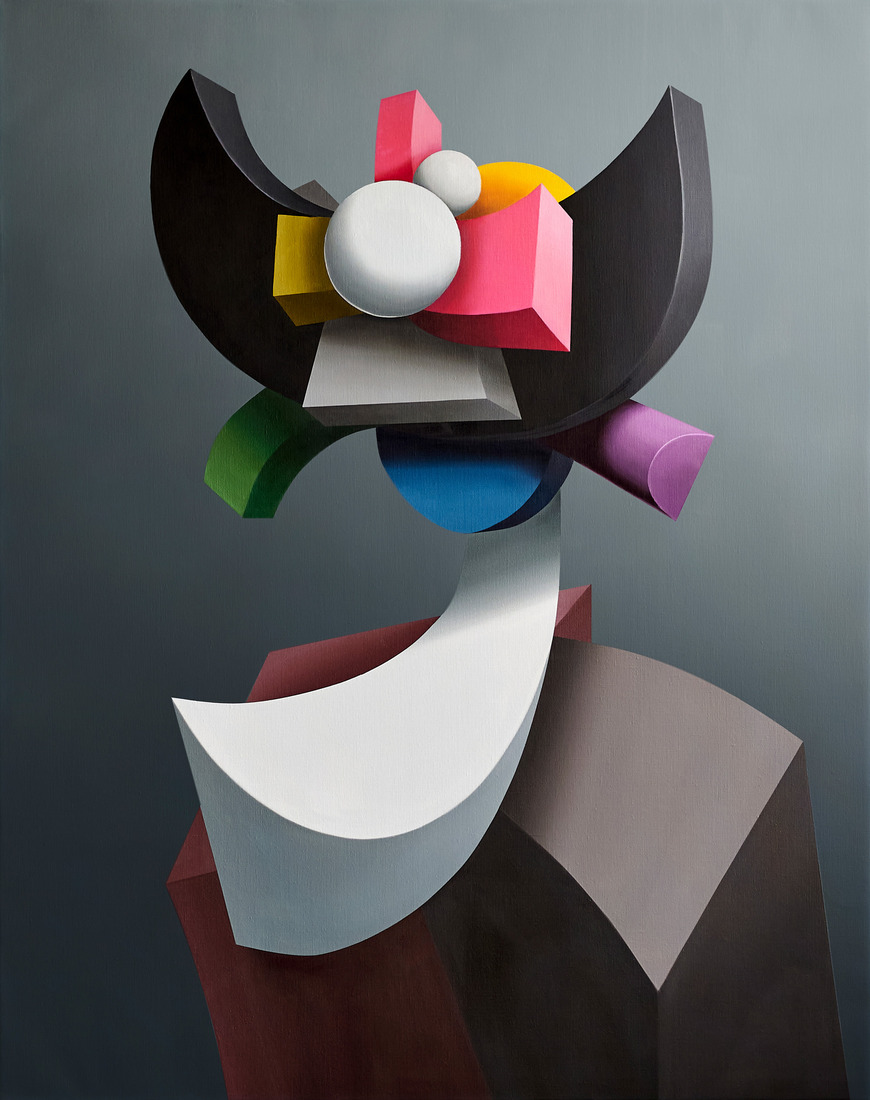
In what ways has technology influenced your art, and how do you incorporate it into your creative process?
In the first half of my life, I lived and learned how to make art with analog tools. In the second half of my life, I became a digital native. Today, my toolbox is filled with a mashup of both of these worlds, and I employ everything equally and intuitively in my work.
How do you portray the passage of time, which plays a significant role in the art you frequently explore?
The portraits are built with geometric pieces held together by a thin gravity, giving a sense of impermanence. To me, this suggests that the pieces (and the sitter) are in a constant state of change over time. I made a film that illustrates this called, Impermanence.
Some artists believe that art should challenge the viewer’s preconceptions. How do you challenge your audience through your work?
I like to think of my work as a puzzle that needs to be unpacked and assembled by the viewer. I hope that everyone sees and feels something different when they see my work and that they are challenged before developing any sort of conclusions.
Can you describe a project or piece that was particularly challenging to create, and what you learned from that experience?
I think the recent exhibition in Dubai was a personal challenge for me because I was asked to design the scenography for the entire show which took place in a giant glass atrium. There was nowhere for the paintings to hang, so I had to design giant geometric walls within the exhibition space to hang the paintings on, as well as design complimentary unique pedestals for the sculptures. Everything was made in the same visual language and it created a holistic world for my work to inhabit.
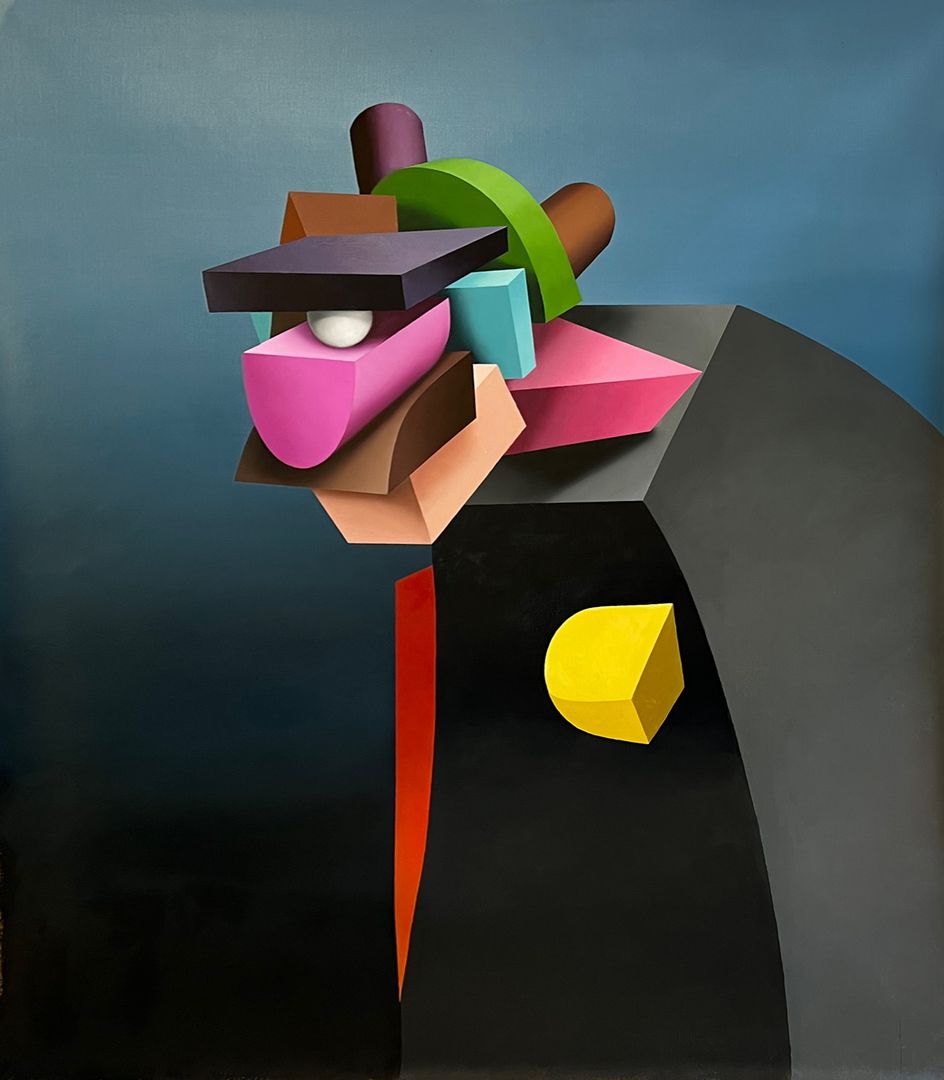
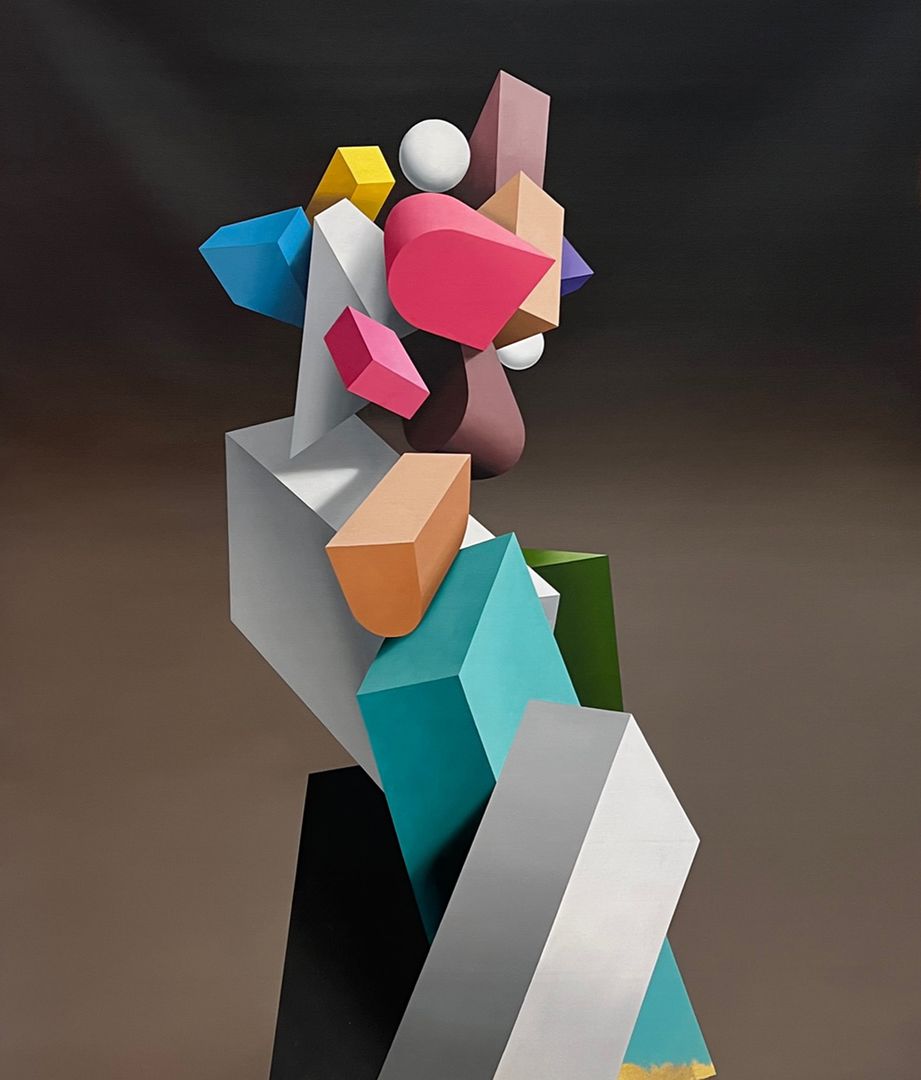
Your art has a dreamlike quality. How do you tap into the subconscious mind to create such evocative pieces?
When I make the preliminary sketch for a piece, I am trying not to think about anything–I try to empty my mind and allow my subconscious to guide the pencil. The results are always surprising and unexpected. I suppose that is where the fantasy aspects come into play because the work is a product of pure imagination and intuition.
Art can serve as a potent tool for social commentary and the ability to initiate meaningful conversations. What societal issues or messages do you intend to address through your work? What discussions or dialogues do you aspire for your work to spark among viewers?
In a world where we are faced with the troubling prospect of not being able to trust what we see, I am interested in finding more genuine ways to portray people that move beyond the traditional reality that we see (ie. portraits of the flesh). Can a psychological portrait more accurately convey the sitter’s true essence?
When someone asks me about a specific piece, I never explain what I think or feel about the work. I want people to develop their relationship with my work. I find it very satisfying when a single portrait can elicit completely different reactions from people.
In your opinion, what is the role of an artist in today’s society?
I can’t speak for other artists, but for me, my work must reflect relevant aspects of what is happening in the world today. When people see my work I want them to see and feel themselves in it. It should have an elusive familiarity about it that acts as the impetus for discussion.
How do you navigate the fine line between commercial success and maintaining your artistic vision?
I make my artwork for myself, which is the opposite of commercial goals. If I were to start making stuff based on what I felt people wanted to see, it would suddenly become commercial. I have zero interest in making commercial art.
Many artists grapple with the concept of originality. How do you define originality in your art?
I see parts of myself in every portrait that I make. That’s something that nobody can replicate.
Art can be therapeutic. Has your art ever served as a form of personal therapy, and if so, in what way?
Definitely. If you want to know how I’m feeling, just look at what I’m working on.
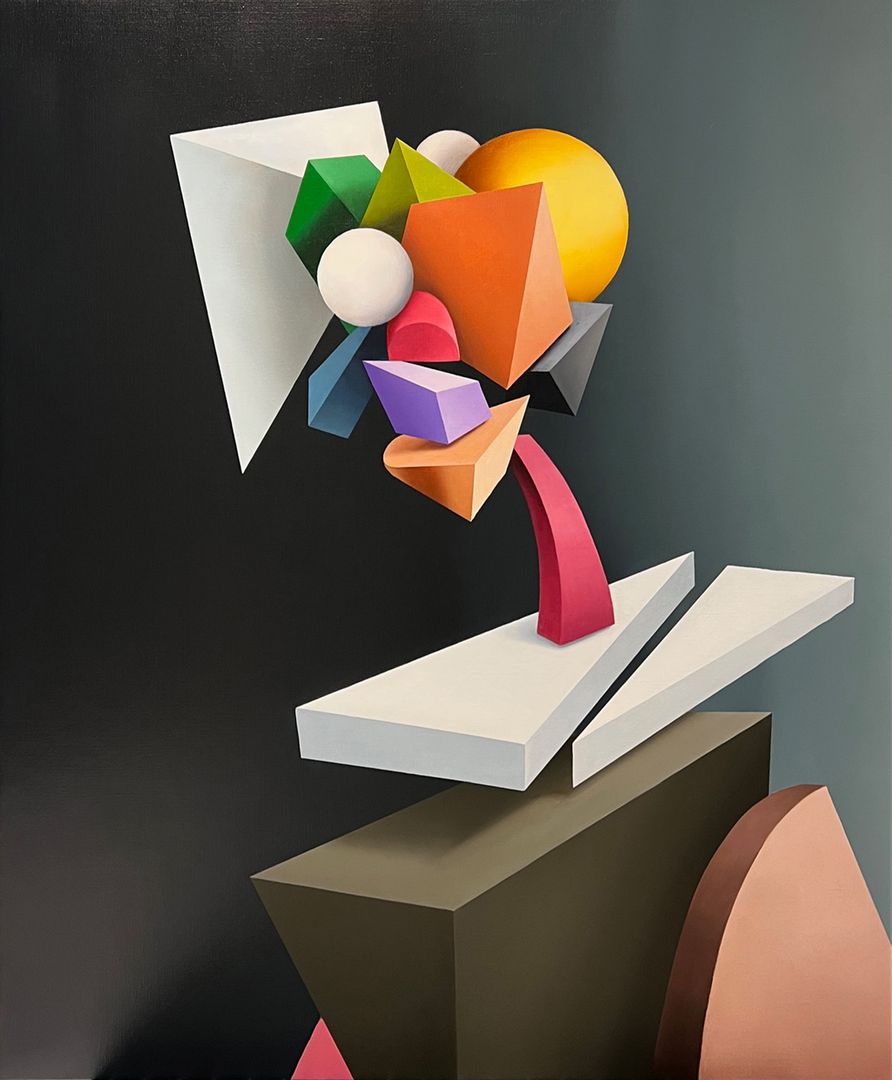
How do you feel your work has evolved over the years, and what have been the driving forces behind these changes?
My work has evolved both in craft and ideation. Today, I am concerned with obfuscating the line between 2-dimensional and 3-dimensional realities.
The concept of “the artist’s journey” is often discussed. Can you reflect on your artistic journey and its significance?
The older I get the less I realize that I know, and that’s an empowering realization because it gives me the confidence to dive headlong into the unknown without worrying about getting lost–because I’ve always been lost, I just didn’t realize it until now.
Many artists grapple with self-doubt and creative blocks. How do you overcome these challenges when they arise?
If you’re doing it for yourself it’s never wrong.
How do you envision viewers interpreting your artwork, given its description as enigmatic?
I used to work in advertising, and the hallmark of a successful piece of advertising creative was to make everyone walk away thinking the same thing. With my art it’s the opposite–I want everyone to walk away thinking something different.
Your artistic endeavors often explores the fragility of existence. What drives your fascination with this theme, and what message do you hope to convey through it?
Existence is fragile. When you accept that completely, it makes it easier to see the beauty in each moment. I like to think of my work as a series of personal snapshots from my life. The moments are fleeting, but the art remains.
Selecting titles for your pieces and understanding the role they play in interpreting your art is a process. How do you approach this aspect of your creative expression?
The titles of (most) of the works are the names of the sitters. Every person that I portray is a real person who has touched me in some way.
What advice would you give to aspiring artists who aim to create thought-provoking and impactful work like yours?
Stop thinking. Completely.
Can you share any upcoming projects or themes you’re excited to explore in your future work?
I have a new solo exhibition at Perrotin Gallery in NYC this spring.